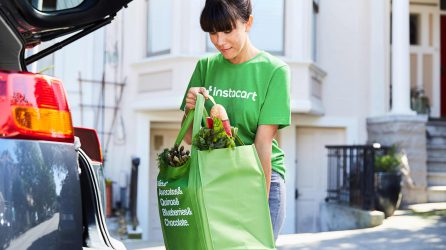5 tactics to grow online sales for category managers

Presented by:
Josi Mathar — 2022
This post has been updated and was originally published January 19, 2020.
It's a fairly predictable scene when the category manager is gearing up towards a category review: spreadsheets everywhere, multiple tabs open and the strategies the team put together with the retailers all laid out in front of them. It's crunch time.
Regardless of the company type, the one thing that nearly every manufacturer has in common: eCommerce is treated as an afterthought once the whole strategy and execution has been mapped out for in-store, promotions and sales. But, it's no longer a viable approach. Today, consumers shop in the omnichannel.
While many CPG businesses are still working out how to apply their in-store expertise to eCommerce, too many opportunities for growing sales and market share are lost. So, how can activation basics that would be second-nature to category managers in an in-store environment become second nature for the digital shelf? And what's needed for CPG category managers to establish category leadership online?
Regardless of your org's eCommerce maturity stage, here are five key things that will help you be effective in developing and driving your online category strategy.
1. Prepare for zero moment of truth on the digital shelf
Moment of Truth (MOT) was introduced by Procter & Gamble referring to the precise moment a customer interacts with a brand and how their impression towards it is affected. Traditionally, the first MOT is when you find a product you like on a shelf, in a store and purchase it. The second is the experience that the product delivers.
But the digital shelf has introduced the zero moment of truth (ZMOT) — the stage where consumers research before they find a product they like. Not surprising when we consider how digital commerce has become integral to our lives. For CPG brand owners, however, it’s increasingly difficult to map out exactly when, where and how these MOTs occur. According to Klarna’s mobile shopping report 79% of Americans have already shopped on their mobile phones.
Findability is the first step towards being a consideration in the ZMOT state. If your product can’t be found, it can’t be considered! If you're on page 2 of a search term then you've lost.
A huge 60% of all adds-to-basket from search are from the first four positions, and 70% of all products added to basket from search come from the first page of results. Stephanie Rubin, Vice President, General Manager North America at e.fundamentals
The other crucial piece is to make sure the content on your product page is correct and moving the customer to the first MOT. Reviewing each SKU to make sure all bases are covered and marrying this up to give the shopper the best opportunity to see your product and understand what it is.
2. The value of shelf space is different for eCommerce
With in-store positioning you have fixed constraints, the product has to fit on the shelf with only limited volume of stock. Plus every supplier is fighting for the optimum space for their products. While also keeping in mind the flow of the category on the shelves and down the aisle. All of this gets reviewed once a year to continually progress and ultimately grow the category. The difficulty today is that ranges are being shrunk to offer shoppers a less complicated and overcrowded mix of products in store. This presents a significant obstacle to category growth trough new product launches, as retailers now want to make space for your newly developed products by swapping out an existing SKU.
Online, brands have a huge advantage but it's often overlooked due to the complexities involved in managing digital platforms. Currently, most suppliers will “fix the basics” not knowing where to progress to next. But to succeed on the digital shelf, brands need to put the same amount of effort into product listings online that they do offline.
"Ultimately, understanding the digital shelf will determine your brand’s future ability to succeed in the omnichannel." John Maltman, CEO e.fundamentals.
Decoding the digital shelf means to understand the unique challenges that online grocery has over the brick-and-mortar setting. Whereas physical shelves only have space for a branded label or an expensive printed CDU, digital product listings online can have their own pages with multiple (mobile-optimized) photos of the product and lifestyle imagery as well as potential for video adverts. The potential of online point-of-sale collateral that is available to convince the shopper to commit to the purchase are limited only by your creativity (and to a a degree what formats retailers offer).
In-store products and fixtures don’t fluctuate often and when they do, it’s tangible and measurable. Online, changes occur frequently, rapidly and often go unnoticed - the retailer algorithm is influenced by shopper search behavior and will look different multiple times a day. It takes more resource and a shift in mindset to maintain your positioning. You require strategic ways to keep optimizing at speed and scale, and will require a complete category perspective to be aware of your competition.
3. Balance function and inspiration
Online shopping is often misunderstood to be more functional in comparison to the in-store experience of the product presentation. This does not have to be the case. Innovation in this area can catapult a brand head and shoulders above their competition as evidenced by the growth of social commerce. Forward-looking retailers like Walmart are leading the way in testing emerging channels to meet different audiences' needs and purchase behavior.
Innovation like these makes allows customers to connect on an emotional level while making sure it remains easy to purchase. An example of a less content-heavy version that can be achieved for online grocery sales, is a "meal for tonight section" that allows you to browse easy cook recipes to create inspiration. The ingredients are all added to the cart when the customer decides which recipe they want to try. This can go a step further to suggest other recipes the customer can make with what they’ve added to their basket.
This is a value-added service that customers would appreciate but could open up possibilities for add on sales, through suggesting the missing products that could be combined with what they have already added to the basket to make something additional and can increase the volume of products sold if customers buy several of the same ingredients to enable them to make the multiple suggested meals.
Brands need to consider how they can work strategically with retailers to engage with shoppers. All the data is there; the benefits stem from how it is used to present back to the shopper to create engaging experiences.
4. Bring the right people along on the eCommerce journey
Traditionally the category review is analyzed, reviewed and delivered by the category manager. It is typically a meeting with the buyer that starts by talking about what is happening followed by "this is what we recommend you do" rhetoric .
It’s one person's input mostly around data, so a lot of charts, tables and figures. When it comes to eCommerce, suppliers tend to have internal teams or an eCommerce specialist who is the hub between functions. It’s important that these become external facing teams as well and lend a hand to the category reviews. Involving the internal eCommerce team in dialogue about category growth online shows the buyer that you take online sales seriously and are geared up for expansion.
There are also many new perspectives and insights that can be shared between departments of different (mindsets and) areas of expertise. Consider shopper marketing for example: They are critical in supporting in-store activation and promotional activities for example signage, FSDUs and TV advertising. However, their journey shouldn’t stop there and should be streamlined when tactics are applied online. In reality, retailers have all the virtual space in the world to add content, products and develop the shopper experience. Retailers really can play in the ZMOT but have yet to realize the untapped potential.
The internal POS experts can offer their expertise in MOT and shopper psychology, the eCommerce specialists can create innovative customer interactions to contribute to the category manager’s growth strategy, which will impress the buyer with the whole team’s commitment to succeeding on the retailer’s online shop.
Ultimately, it is the narrative around your category and brands that interacts with customers to persuade them to buy. They buy into the story, to include it in their life, to achieve aspirations associated with it. The products in your category, the marketing and branding behind each of them individually and as complimentary cross-promotion, and the POS activation should together weave an enticing narrative for the potential customers.
Keep the story going throughout the journey. If the journey gets broken customers will be enticed to shop elsewhere that provides a more enjoyable shopping experience. This is especially crucial for eCommerce transactions on mobile devices. Customers do not have to physically travel to a different store if your product listings are not good enough, they will just click off the page and buy from your competitor instead if a more engaging customer journey is offered, the benefits of that product were more clearly exhibited or you didn't track if your promotions were driving out of stocks.
In order to map out effective customer journeys, you need to map out internal relationships between teams; collate the insights needed for each touch point, build the online story at the back of this and then take it to the buyer to present it to the public.
5. Think like the buyer
If you don’t think like thb Buyer how can you expect to influence them? We all tend to think the buyer is interested in the cost. However, next-gen buyers are leaning towards strategy and ultimately shaking things up to interrupt the shopper. In simple terms shoppers are key to the success of a category; the more they buy the more the category will grow. If you take the previous four points and bring them together you are ultimately building a consumer/shopper strategy plan.
However, the challenge is making sure you speak the buyer's language and still discuss what’s important to them. This way you can build great range reviews and solid recommendations that also encompass eCommerce strategies. Just remember to remain category focused while sharing exciting ideas!
Mark out the key drivers that you see in the market, outline the target audience, explain how it will work and then most crucially of all, link it back to the retailer's strategy and objectives.
Summary
Want to be the first brand in your category to benefit from opportunities online? Be the first to innovate online. You have to challenge the functional mentality otherwise you'll never get beyond compliance and price, which is where the most of the eCommerce industry is stuck. Make the product listings in your category engaging and offer value to your customers more than just the lowest price.
The retailers want to increase their overall revenue as much as you want to increase your category sales. Show them the work you and your team are willing to do to properly take advantage of the growing possibilities of eCommerce. You want your products to be the most visible in the category, to make the best use of innovative new forms of POS on the digital shelf, to create the most engaging customer journey.
What are the buyers goals and what do they want to achieve - and how can we help them get there? Your buyers care about the best customer experience driving the most sales. If you follow all five steps above then you have made their life a lot easier, you will grow your category and may even end up looking forward to celebrating your success and expanding on to new ideas at your next category review with a very happy buyer.
All the digital Shelf Analytics You Need to Succeed at Speed & Scale
See why world leading brands choose e.fundamentals for actionable digital shelf insights
Request A demoLatest Resources

CommerceIQ Launches Global Retail Ecommerce Management Platform Combining Sales, Supply Chain, Retail Media, and Digital Shelf with e.fundamentals Acquisition
Ecommerce platform enables consumer brands to grow market share profitably in today’s inflationary and supply-constrained environment through intelligent automation, supporting over 450 omnichannel retailers in 41 countries.

e.fundamentals becomes a CommerceIQ company
e.fundamentals has been acquired by CommerceIQ, the leading Retail Ecommerce Management Platform, headquartered in Palo Alto, California. Consumer brands can now harness one global software platform to power profitable market share growth across all major retailers.

5 strategic pricing opportunities CPGs should focus on now
As tensions run high between retailers and suppliers, CPGs need to be smarter than ever about strategic pricing. Here’s how to use digital shelf analytics to hold your own in tough negotiations.

What the smartest CPGs get right about selling on Instacart
This post has been updated and was originally published March 30, 2021. It's time CPGs get ready to win on Instacart. So read and learn: What's all the hype around…

5 optimization tactics to grow digital shelf sales
This post has been updated and was originally published May 14, 2020. Consumer goods companies (CPG) continue to grapple with enormous shifts to the industry as the eCommerce boom continues…

5 tactics to grow online sales for category managers
Category management has changed. We've highlighted the 5 tactics to help you scale your growth on the digital shelf at speed.
View Our Most Popular resources to help you learn and win on the digital shelf.

The Ultimate Guide to Content Management on the Digital Shelf

The Digital Shelf Cast - Listen to our latest episode





